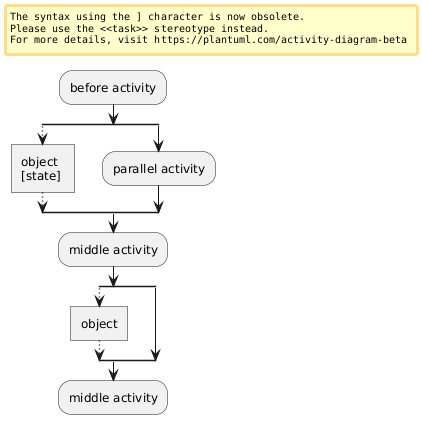For now I found the following workaround. It is not pretty unfortunately.
@startuml
:before activity;
split
-[dotted]->
:object
[state] ]
-[dotted]->
split again
:parallel activity;
end split
:middle activity;
split
-[dotted]->
:object]
-[dotted]->
split again
end split
:middle activity;
@enduml
